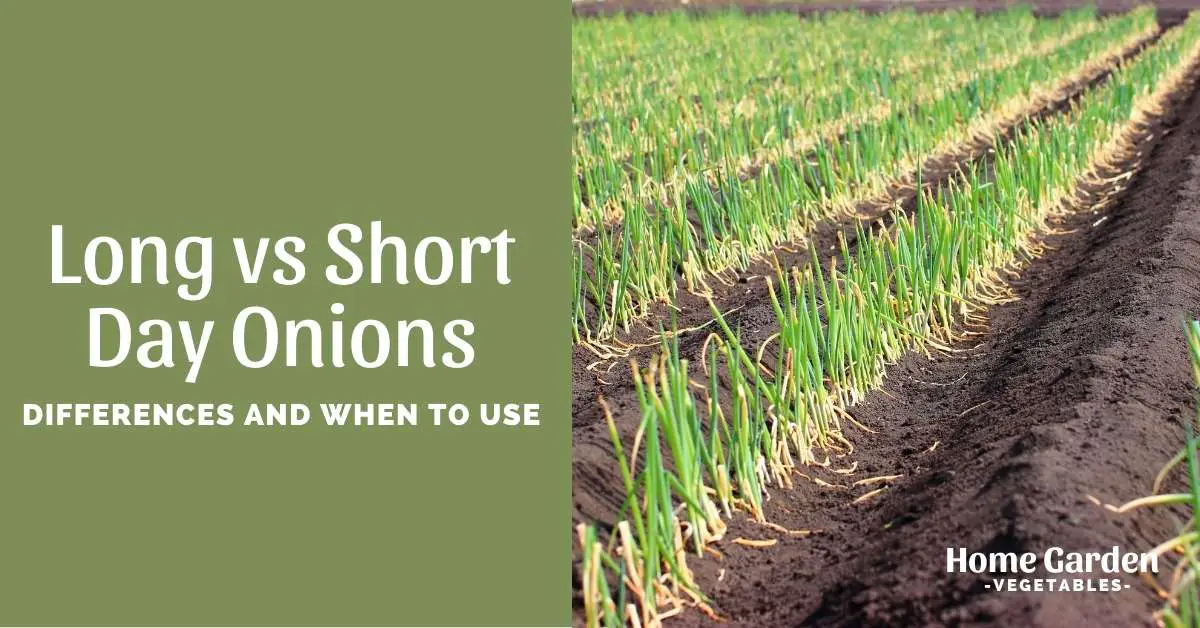Onions are classified by the number of daylight hours they require to grow bulbs. These are called long-day and short-day onions. Both these varieties are suited to different climates based on the length of daylight that the region offers them. When choosing onion cultivars to grow in your garden, it’s worth understanding the differences between the two categories to help you pick something that will thrive in your garden. Keep reading to find out more about long vs short day onions!

What Are Long-Day Onions?
Long-day onions are the varieties that start bulb development once the daylight length reaches 14 to 16 hours a day. These varieties are excellent for storage and grow well in northern climates (zone 6 and colder).
Reader Poll: What online courses would interest you?
What Are Short-Day Onions?
Short day onions are triggered for bulb development once the length of daylight reaches 10 to 12 hours per day. These varieties are generally sweeter than long-day onions. Their higher sugar and water content means they are best for cooking fresh and won’t hold up well in storage. Short day onions grow well in warmer climates, where the winters are mild (zone 7 and warmer)
When To Plant Depending On Your Location
Long-day onions are usually planted by northern growers in late winters to early spring to harvest by late summers once the long summer days promote bulbing. However, some cold-hardy varieties are also suitable for planting in the fall to overwinter.
Short-day onions are generally planted by southern growers in late summers to develop roots before the cold weather sets in. Install some frost protection to help the onions overwinter. The onions stay dormant during the winters, resuming growth in early spring. As soon as the day length approaches 10 hours, the onions start bulbing and are ready to harvest by late spring.
Subscribe to our newsletter!
What Happens If You Plant The Wrong Type In Your Garden?
The specific daylight hours act as a trigger to initiate bulb development. As soon as the day length shifts to the number of light hours that the onion requires, the plant will transfer the focus of its energy from the foliage growth above the soil to bulb development underground.
If you plant the wrong onion variety in your region, top growth might not be affected, but the bulbs will not get a chance to develop optimally. Unless you’re simply growing onions for the green tops and wouldn’t mind small, unimpressive bulbs, you would want to pick the correct category for your garden.
Conclusion
By now, you know enough about long vs. short day onions to choose the perfect variety for growing in your garden. If you’re still unsure or live in a region at the boundary line of the ranges for the two categories, there’s always a third variety you can count on – intermediate day onions. They’ll adapt well to any growing zone, so you can expect to see big, beautiful bulbs no matter where you plant them.

